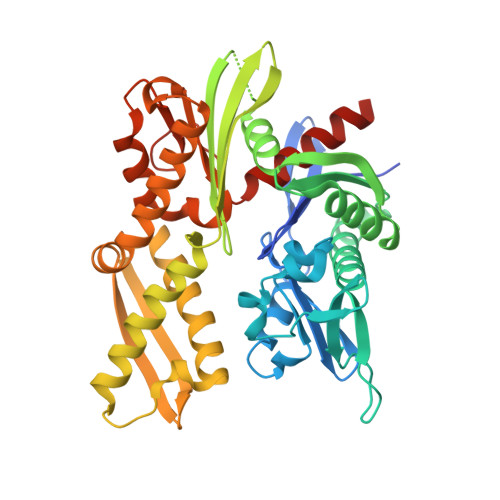Structural characterization of a eukaryotic chaperone-the ribosome-associated complex.
Leidig, C., Bange, G., Kopp, J., Amlacher, S., Aravind, A., Wickles, S., Witte, G., Hurt, E., Beckmann, R., Sinning, I.(2013) Nat Struct Mol Biol 20: 23-28
- PubMed: 23202586
- DOI: https://doi.org/10.1038/nsmb.2447
- Primary Citation of Related Structures:
4GMQ, 4GNI - PubMed Abstract:
Ribosome-associated chaperones act in early folding events during protein synthesis. Structural information is available for prokaryotic chaperones (such as trigger factor), but structural understanding of these processes in eukaryotes lags far behind. Here we present structural analyses of the eukaryotic ribosome-associated complex (RAC) from Saccharomyces cerevisiae and Chaetomium thermophilum, consisting of heat-shock protein 70 (Hsp70) Ssz1 and the Hsp40 Zuo1. RAC is an elongated complex that crouches over the ribosomal tunnel exit and seems to be stabilized in a distinct conformation by expansion segment ES27. A unique α-helical domain in Zuo1 mediates ribosome interaction of RAC near the ribosomal proteins L22e and L31e and ribosomal RNA helix H59. The crystal structure of the Ssz1 ATPase domain bound to ATP-Mg²⁺ explains its catalytic inactivity and suggests that Ssz1 may act before the RAC-associated chaperone Ssb. Our study offers insights into the interplay between RAC, the ER membrane-integrated Hsp40-type protein ERj1 and the signal-recognition particle.
Organizational Affiliation:
Gene Center and Center of Integrated Protein Science Munich-CiPS-M, Department of Chemistry and Biochemistry, University of Munich, Munich, Germany.
















